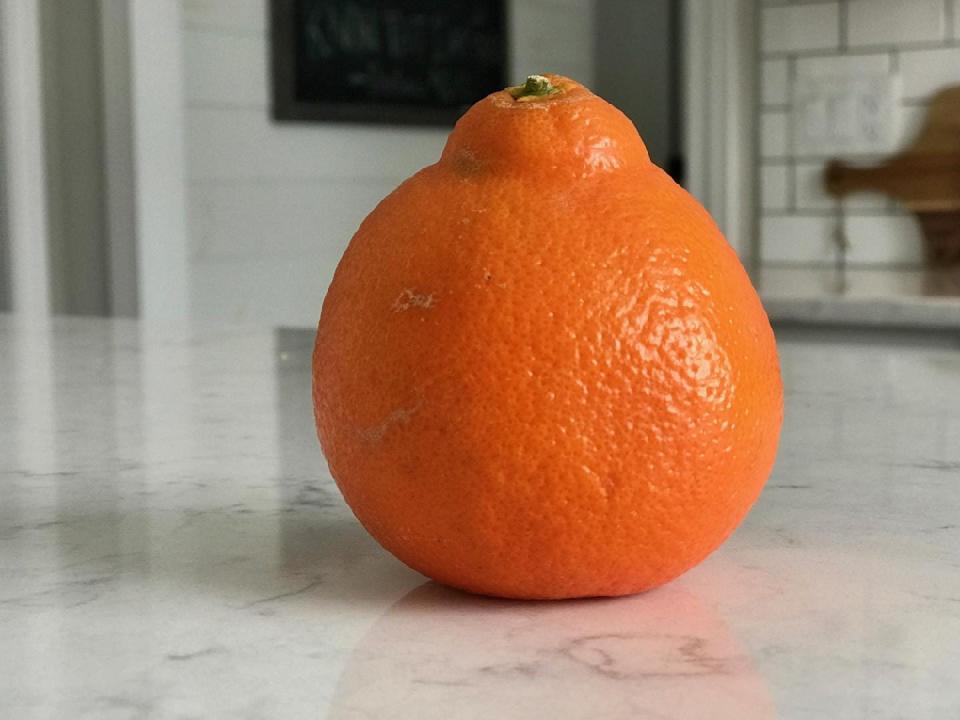This juicy citrus is a hybrid between an orange and a grapefruit | Mystery Plant
I remember several years ago listening on the radio in my car — yes, the radio — to a public interest story about the benefits of eating compost: fresh, warm compost, straight from the garden, so full of healthful benefits, including a variety of useful microbes, plus that nutty, earthy taste that can’t be beat. Of course, it was April’s Fools day.
Sure enough though, you might be hearing about the benefits of having a compost pile in your yard, if you are lucky enough to have a yard.

A compost pile can be a wonderful thing, accepting just about all of your kitchen scraps and yard clippings over the course of time, ultimately rendering fine, crumbly material, with a pleasant fragrance, for either spreading around in your garden, or using as potting soil.
And then there are the friendly fungi and bacteria, as well as the fauna of a compost pile: worms, worms, worms, which are so nice to have in the garden, too. I don’t really know all the technical ins-and-outs of the science of proper composting: I used to just pile it all up and turn it every now and then with a garden fork.
It makes sense that a healthy compost pile is protected from too much moisture, and that it is able to get plenty of air inside. After loading up all the scraps all winter and spring, the pile will eventually cook itself down. If all goes well, the interior of your pile will warm up enough to release steam when it is turned.
A compost pile I saw recently had some very attractive rinds. You’ll know instantly that these are the peels of some sort of citrus fruit.
Our Mystery Plant (“Tangelo,” Citrus X tangelo) is indeed a member of the citrus family, a family that consists of nearly 200 different species.
This family is named the “Rutaceae,” after the genus Ruta, commonly called “rue” (Ruta graveolens) which we know as a very bitter, medicinal herb. The family is obviously better known for the genus Citrus, which gives us all the various citrus fruit forms: orange, lemon, citron, grapefruit, tangerine, lime, “blood orange,” kumquat — and the unusual “Ugli” fruit, all are members of this genus.
Citrus fruits themselves are actually special kinds of berries. We botanists have a special name for it: “hesperidium”. This berry type is distinctive in having a leathery rind embedded with oil cells. The interior is divided into a number of seed-bearing segments: these of course are the “sections” of the fruit.
This week’s Mystery citrus is actually a hybrid between a sweet orange and a grapefruit. It comes in several varieties, and it can be hybridized with other things, too. Its fruit is bright orange and easy to peel.
Most varieties have a sort of bulge or “nipple” at one end. These fruits are a favorite at the table this time of year; in America, they are marketed from just about anywhere in the citrus “belt.” We received a big box of these things during the holidays, and the other day squeezed every single one: the juice is terrific!
John Nelson is the retired curator of the Herbarium at the University of South Carolina, in the Department of Biological Sciences. As a public service, the Herbarium offers free plant identifications. For more information, call 803-777-8175 or email johnbnelson@sc.rr.com.
This article originally appeared on Tallahassee Democrat: The juicy tangelo is a hybrid between an orange and a grapefruit

